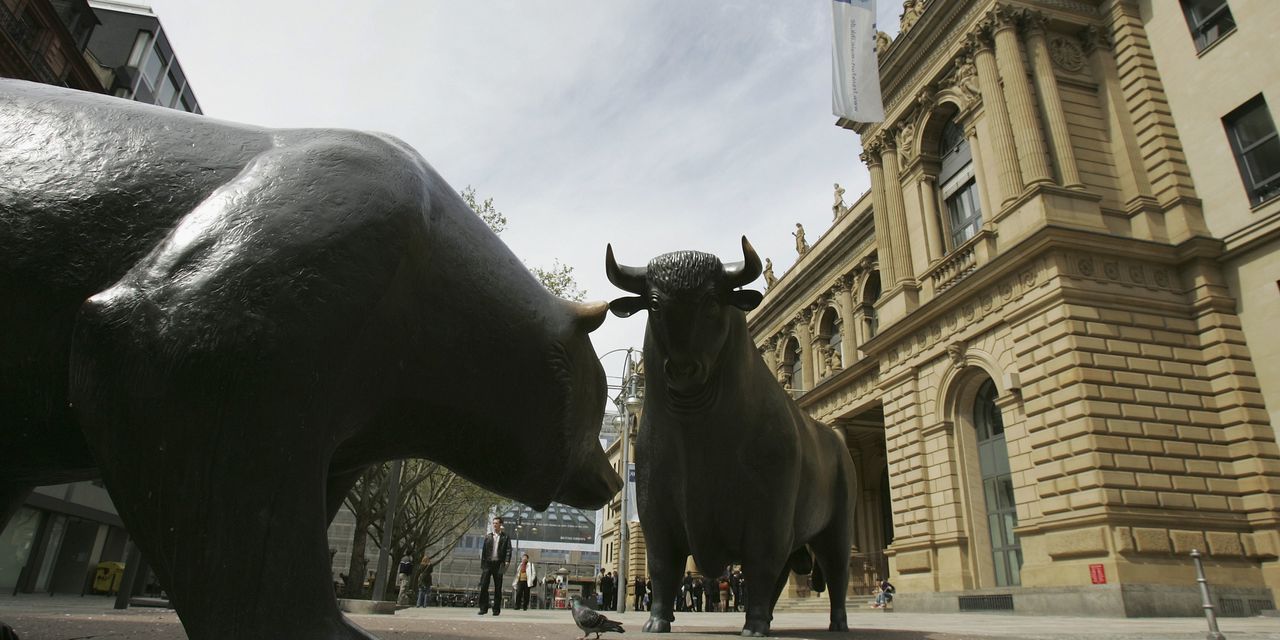Regional-bank stocks on Friday lagged the broader market but rose from lows earlier in the day, as Wall Street reacted to a rise in Treasury yields driven by a stronger-than-expected September jobs report.
A double whammy of uncertainty around a potential interest-rate hike by the Federal Reserve and a run-up in yields as bond prices decline had a more pronounced impact on mid-sized and smaller banks.
The SPDR S&P Regional Banking ETF
KRE
fell 0.4%, while the S&P 500
SPX
rose by 0.5% after moving lower earlier in the day. The Dow Jones Industrial Average
DJIA
rose by 0.6%. The KBW Nasdaq Bank Index
BKX
rose 0.3%.
For the week, the SPDR Regional Banking ETF is down 2.2% and the KBW Nasdaq Bank Index is down by 3.4%, while the S&P 500 has fallen 0.5%.
Among individual issues on Friday, KeyCorp
KEY,
fell 0.7%, Fifth Third Bancorp
FITB,
moved lower by 1.5% and U.S. Bancorp
USB,
dropped by 0.3%.
Meanwhile, the Financial Select Sector SPDR ETF
XLF,
which includes the largest banks, rose by 0.7%. It’s now down about 0.9% for the week.
On Friday, JPMorgan Chase & Co.
JPM,
rose 1.3%, Bank of America Corp.
BAC,
rose 0.8% and Goldman Sachs Group Inc.
GS,
rose by 0.9%.
Treasury yields moved sharply higher, pushing the 30-year rate intermittently past 5%, which would be on its way to the highest level since August 2007.
See: Spiking long yields are a danger for markets: here’s what may happen next and 5 things investors should do
Higher bond yields impact the fair value of bank bond portfolios, while increasing unrealized losses on the bank’s loan portfolio. These factors also put pressure on deposit costs and present a headwind on net interest income.
Regional-bank performance has been seen as particularly vulnerable, because these mid-sized players may lack the diversification of larger banks to even out their results.
Also read: Here’s what to expect when banks report earnings, and how cheap their stocks are now
Richard Bove, an analyst at Odeon Capital, said earlier this week the increase in bond yields has “intensified” the problems faced by the banking sector.
“They lower the value of bank assets — this lowers the value of their equity,” Bove said in an email to MarketWatch. “It intensifies the need of the Treasury to get more equity into the banks. Plus, it causes more difficulty in allowing the banks to increase the rates on their deposits.”
The yield on the 2-year Treasury BX:TMUBMUSD02Y dropped from earlier levels but held on to a gain of 4.4 basis points to 5.067% on Friday, from 5.023% the previous day.
The yield on the 10-year Treasury BX:TMUBMUSD10Y moved up almost 13 basis points to 4.842% from 4.715% Thursday afternoon.
The closely watched monthly jobs report from the Department of Labor showed the U.S. economy created 336,000 new jobs in September, well ahead of the Wall Street expectation of 170,000 new jobs.
The labor-market results nudged higher the chance of further increases to benchmark interest rates by the Fed, as the central bank attempts to cool the economy and ease inflation.
Meanwhile, earnings season for the banks kicks off Oct. 13 with updates from JPMorgan Chase, Wells Fargo & Co.
WFC,
and Citigroup
C,
as Wall Street looks to the sector for its view on upcoming bank performance and the economy.
Also read: Bank stocks end Q3 with mixed results as Citi analyst hits buy button on ‘attractive entry point’ for sector
Read the full article here













Leave a Reply